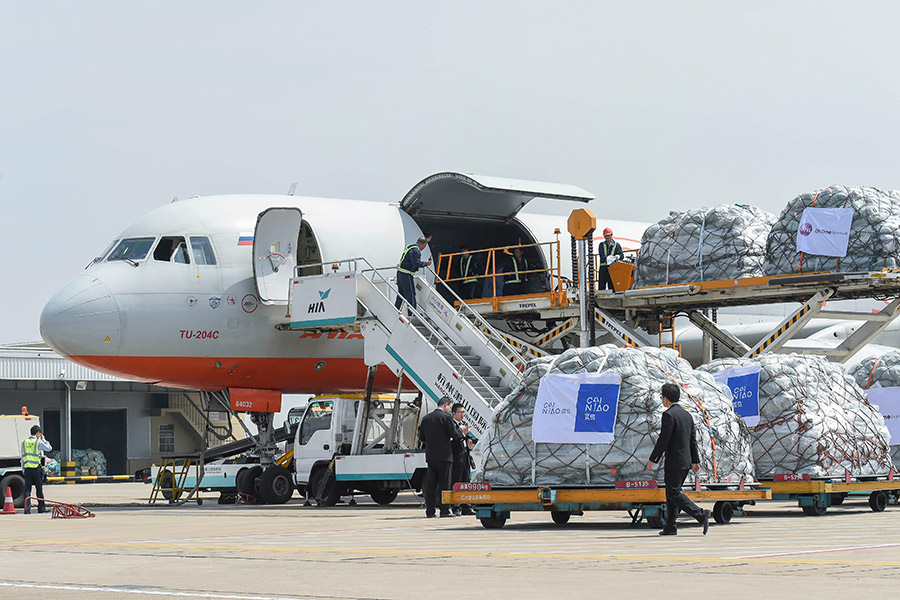

The increase of work from home activity has accelerated digital adoption in many industries, with eCommerce, in particular, benefiting immensely. For many within the industry, it has been a year of record volumes as consumers moved purchases to online channels and organisations looked to diversify from traditional models.
The benefits of growth have helped advanced plans for many in strengthening their eCommerce capabilities. Integrators have been busy extending infrastructure, whilst some larger eCommerce brands have continued to invest in building their global networks. Other transportation modes, such as ocean freight, have also increased their share of eCommerce traffic.
All these scenarios may impact the share of eCommerce traffic handled within the air cargo industry. Integrators have always been a strong source of eCommerce traffic, viewed as a traditional one-stop shop with standard processes making it simplified for both merchant and consumer. With eCommerce brands, while many have sought to build their networks for commercial benefits, it is also on the back of their desire to increase consistency and transparency in controlling the data flows which directly impact the consumer experience.
What can air cargo industry stakeholders do to accommodate this growing channel? How are the needs of a B2C market catered for in an environment where B2B is the majority? What do eCommerce brands look for specifically? Here are a few trends that air cargo providers can focus on to capitalise on the eCommerce boom.
Customer-first approach
Whilst many organisations have values that place customers at the centre of their business, few deliver to this mantra-like eCommerce brands. Every proposal and its impact on customer experience can influence future website visits. When evaluating new initiatives, air cargo stakeholders need to demonstrate to eCommerce leaders how they will physically improve the experience for ultimate end consumers. Importantly, it must happen quickly with many driving start-up type agility to react rapidly to changing consumer expectations.
Data Transparency
eCommerce merchants place data and technology above all else (aside from customers)! In many respects, the data is just as important to the physical movement of the package. eCommerce brands are looking to spend time on monitoring customer satisfaction rather than logistics processes. Process areas, such as booking, routing, commercial, labelling and tracking data sets, are already instantly exchanged via API as information changes.
Plugging into eCommerce needs timely and accurate data supplied from all air cargo stakeholders coupled with an ongoing commitment to digitising operations and systems. A positive international cross-border movement is largely based on transparency and available data which ultimately provides convenience to the consumer and likely improves re-purchase rates in the marketplace.
Open collaboration
Whilst air cargo may not necessarily be the last mile that physically hands the package to the consumer, its role is vital in the visibility and speed customers are seeking. The various touch points between authorities, forwarders, airlines, ground handling agents and customs brokers are all vital components in the physical performance and data exchange. Promoting a truly open collaboration to understand and improve each milestone together will deliver greater visibility and shorter transit times for end consumers. The ability to link these components effortlessly together will ensure air cargo competitiveness for eCommerce
Agile campaigns
eCommerce promotions such as Prime Day, Double 11, Cyber Monday and Black Friday can deliver high-velocity spikes in a very short period. However, despite the best forecasting, everything can be changed instantly depending on how consumers react to promotions. Building models and routings that are flexible to scale at short notice are critical during these periods where delays can be more visible for brands and consumers. The variable activity comes with the territory of handling eCommerce; it is about how best to adapt.
Converging B2B/B2C
Businesses looking for greater operational and procurement synergies are finding ways to integrate B2B and B2C supply chains that have traditionally been separate with different requirements. Air cargo procurement, handling and cross-docks need processes, capability and systems that can be optimised to support or consolidate both business (B2B) and consumer (B2C) commodities. In particular, the ability to scan, label, pack and sort a high volume of small packages will be most efficiently performed by investing in automation.
Air cargo experience
Brands are experts in their marketplaces, and they are looking for air cargo stakeholders to become partners in developing solutions which can expand their business be it through new products, enhanced visibility or geographical reach. Marketplaces are looking for recommendations on how to create an advantage such as simplifying processes, increasing visibility, reducing costs or improving transit times to name a few.
The success in penetrating additional market share will be in how the industry can apply a focus collaboratively to meet the expectations of speed, data sharing and transparency that the eCommerce world is accustomed too. Ultimately, as brands continue to focus on consumer experience it’s up to the industry to connect seamlessly in helping deliver the best solutions that meet the specific needs of eCommerce products.
All views expressed in this column are that of the author and do not necessarily reflect this publication’s view. This article was not edited by Payload Asia and the author was not remunerated for this article.
Do you know more about this story? Contact us through this link.
For media kits and information on advertising or sponsoring, click here.









